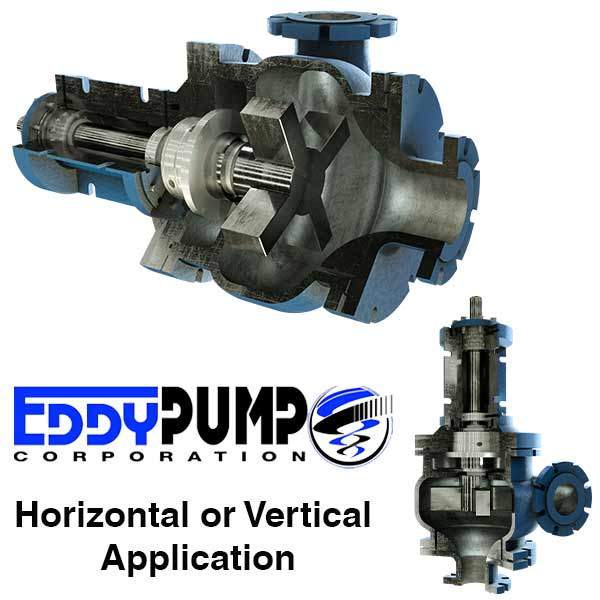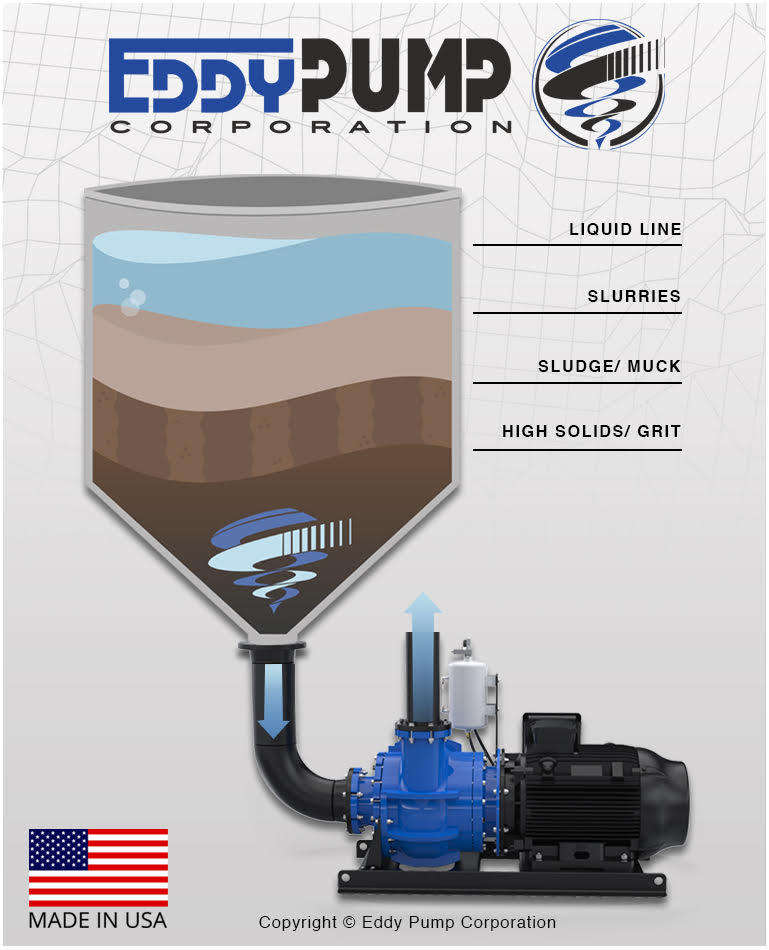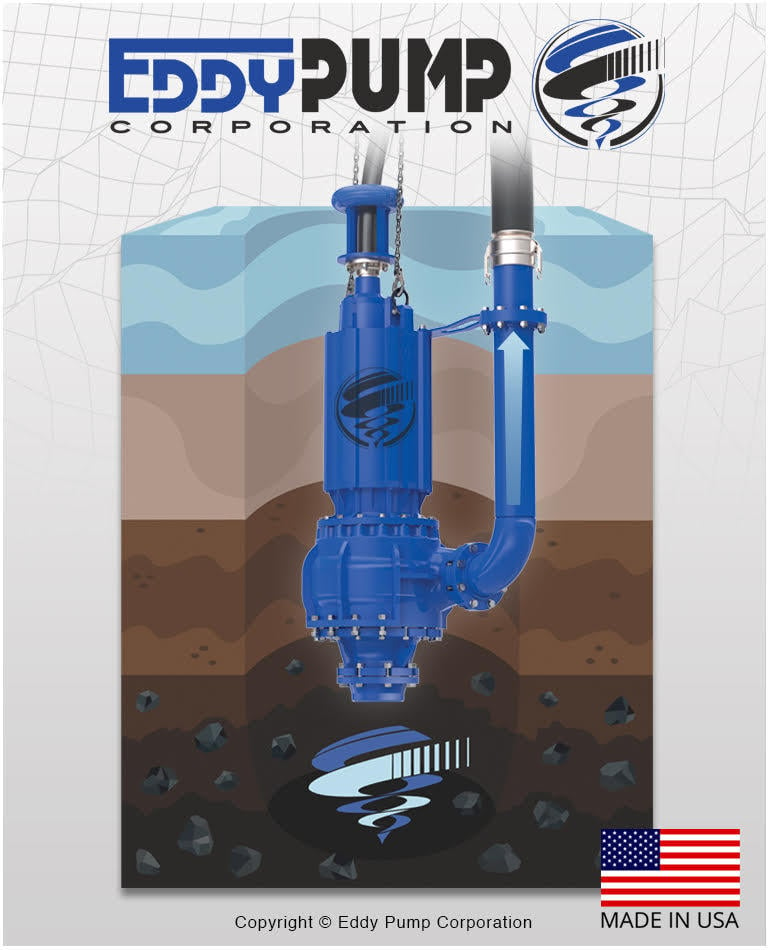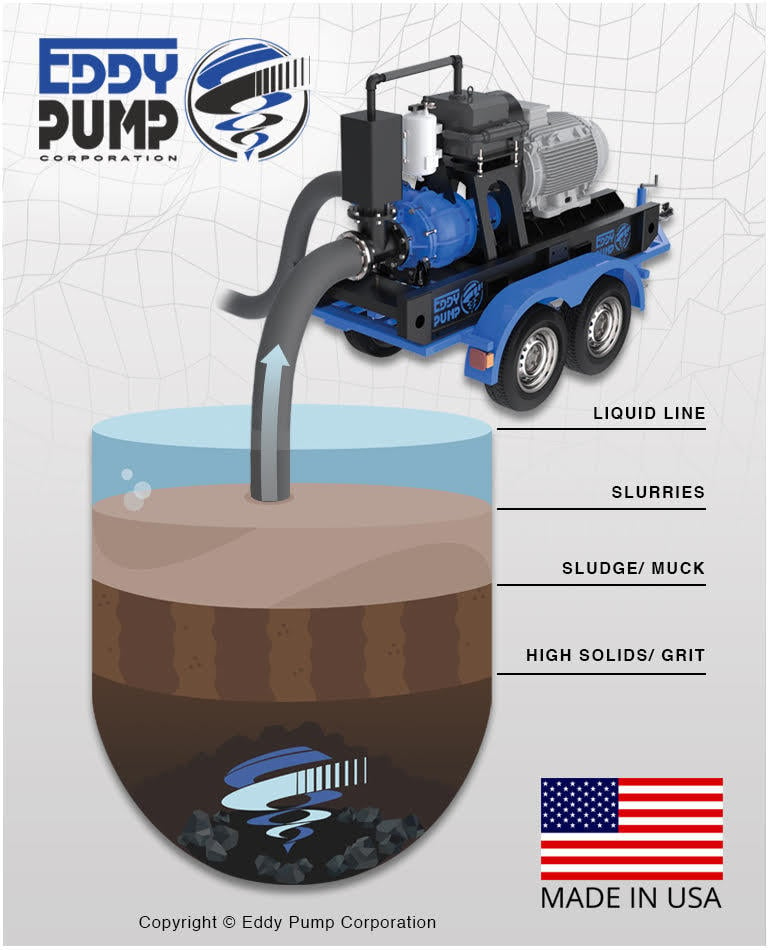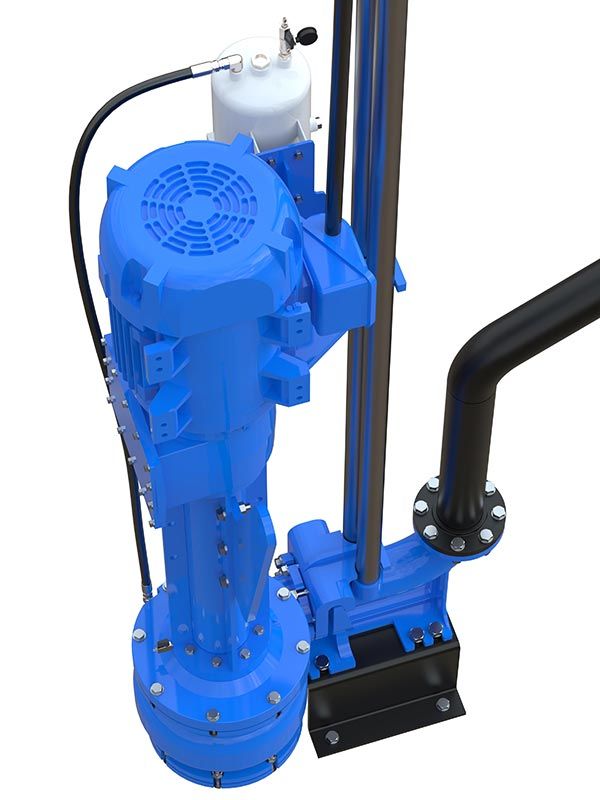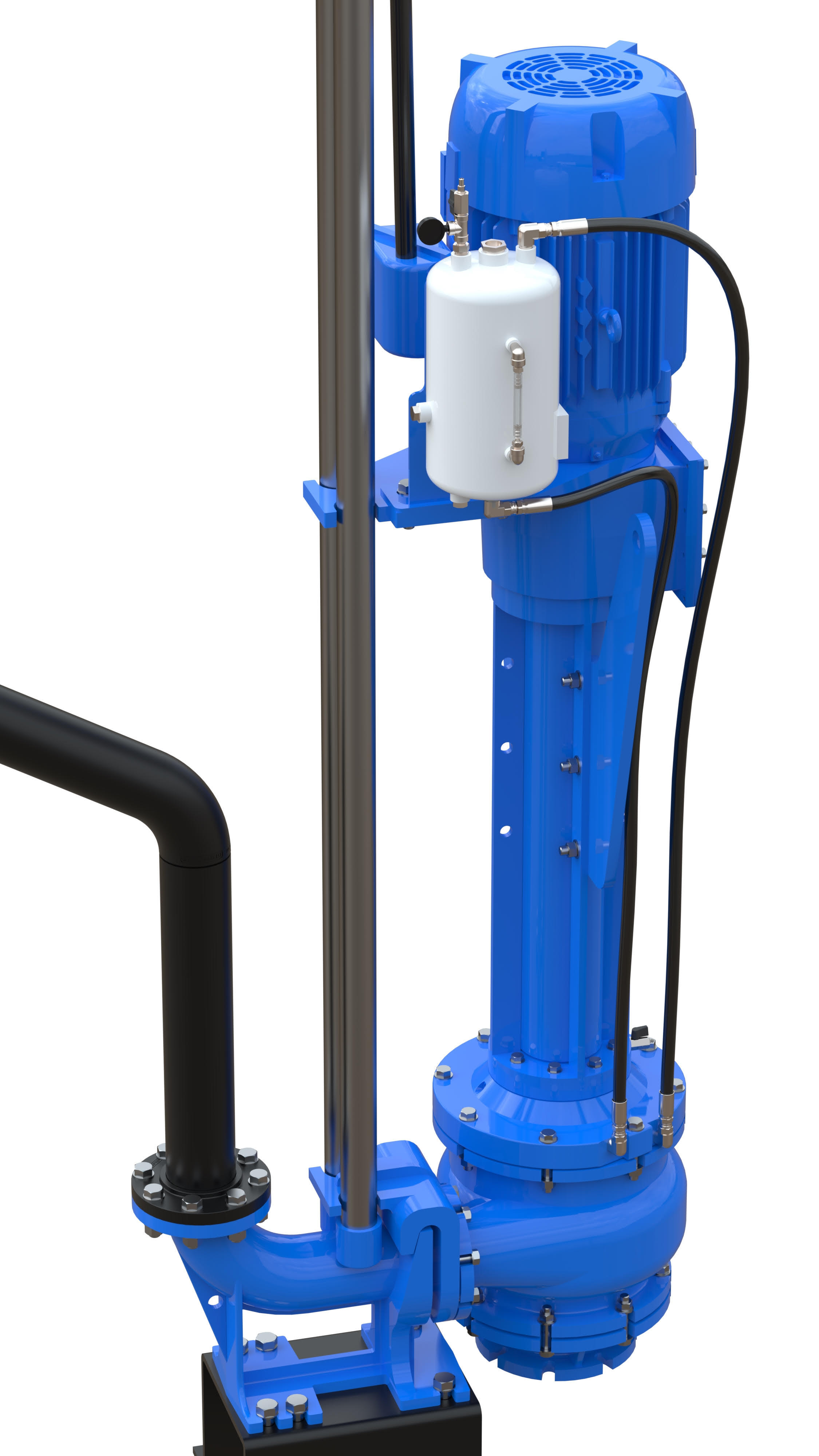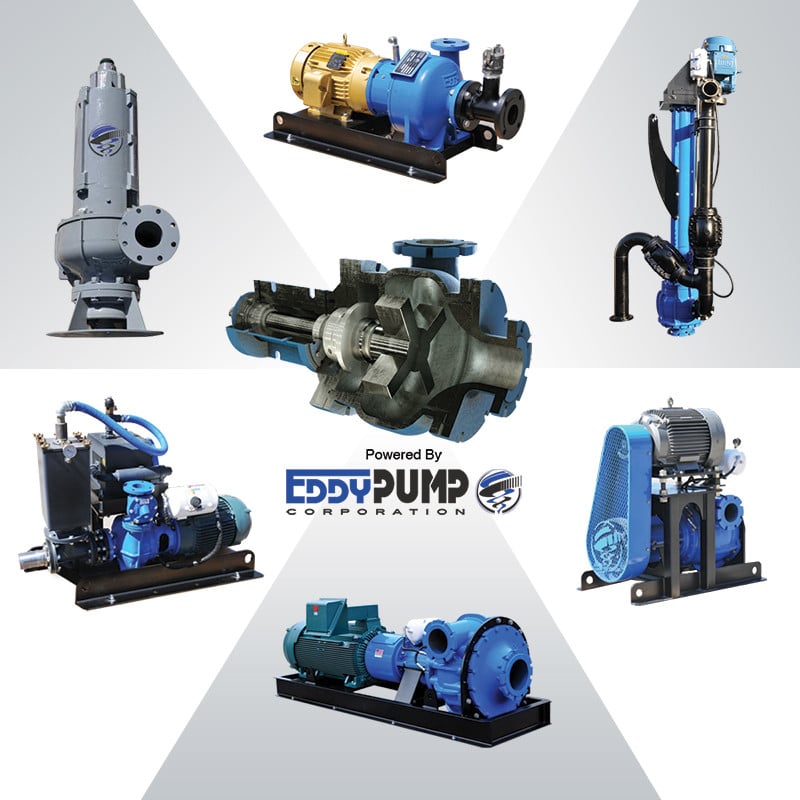Slurry Pumps
Industrial non-clog slurry pumps engineered for dredging, process pumping applications, highly viscous or abrasive material, sludge, muck, paste, high solids and abrasive applications.
EDDY Pump industrial slurry pumps are non-clog pumps designed for high solids industrial pumping applications. Our patented pump technology outperforms all centrifugal, vortex and positive displacement pumps in a variety of the most difficult pumping applications.
Learn Why Our Slurry Pumps Have Higher Production and More Uptime
Youtube not loading? Try our alternate video player
The adjustable size, ultra recessed rotor can pass the largest material in the industry, ensuring maximum uptime when pumping large solids.
Main Applications: Process Pumping, Mining, Wastewater, Chemical, Oil, Sludge, Paper/Pulp, Dredging, Fly Ash Pumping, Coal Ash and more.

In harsh conditions with sand, sludge, rocks, slurry, normal dredge pumps clog, wear and fail more often. This leads to downtime for maintenance, hurting your bottom line. This is not the case with the EDDY Pump, since we have the tolerance to pump objects up to 12 inches to ensure maximum uptime and production rates in any industry dealing with abrasives, solids, and high viscosity materials.
EDDY Pump Deployment Options
Flooded Suction Pumps
With flooded suction pumps, the fluid to be pumped is positioned above the pump. With the pump positioned below, gravity can feed the fluid into the suction of the pump and keep the pump primed.
Submersible Pumps
Pumps that are completely submerged in the liquid are called submersible pumps. By being submerged in the fluid to be pumped, there is no need for priming the pump.
Self-Priming Pumps
With a self-priming unit, the pump and power unit are not submerged. The suction hose goes into the slurry and the unit acts like a super-sized wet-dry vacuum. Can be trailer mounted for added mobility.
Slurry Pump specs
Choosing the Right Pump
Horizontal VS Vertical Slurry Pump: Which Should You Choose?
When choosing between horizontal and vertical slurry pump mounting configurations, there are several factors that determine which fits your application the best. First, what fits your existing setup. Horizontal and vertical pumps possess their own distinct differences and benefits for industrial pumping applications. The main difference between these two pumps is the shape, space footprint and position of the shaft.
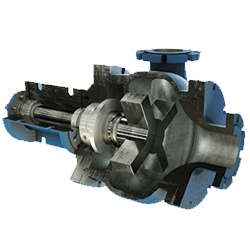
Horizontal Slurry Pump
- Easier to install and maintain, due to quick access to pump components allows for easy repair jobs.
- Requires more room, due to its larger footprint compared to vertical.
Vertical Slurry Pump
- Less smaller footprint, allowing it to be implemented in hard to reach jobs.
- More versatile, can be cable hung straight down and inserted directly into medium to pump target material.
- More difficult to repair and tougher maintenance.
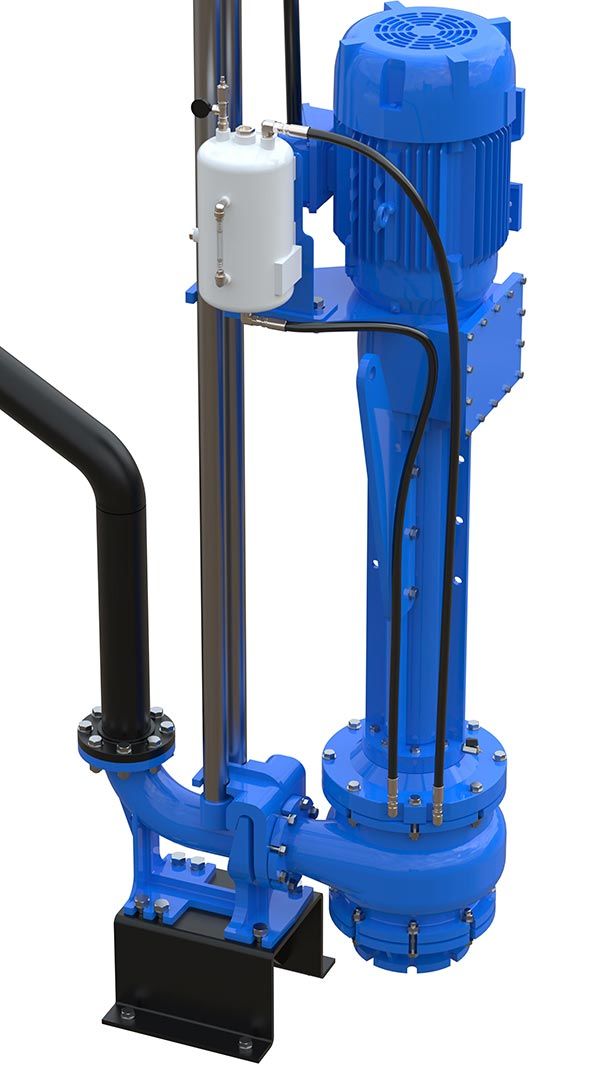

EDDY Pump Features and Benefits
The Ideal Process Pump for Slurry, Sludge, Grit, Fly Ash, Paste and Scum.
EDDY Pump Advantages
- Non-Clog, High Viscosity, High Specific Gravity, High Abrasives, Low pH Pumping Design
- 30-70% Solids Pumping by Volume
- Ability to pump objects of up to 12-inches in diameter
- 100% American Built
- State-of-the-Art Research and Development Facilities on site
- Easily process rags, string, rocks and foreign objects
Options
- Vertical or Horizontal Mounting
- Submersible / Immersible
- Process Pump Applications
- Electric or Hydraulic Powered
- Various Metals Available
- Variable Speed Control
- Self-Priming
- Trailer / Skid Mounted
- Bearing House / Close-Coupled
- Automated Controls
Pump Features
- Premium Seal Support System
- Non-Clogging Design
- High Solids Handling
- High Viscosity and Specific Gravity Handling
- High Abrasives Handling
- No Critical Tolerances
- Low Maintenance
- Minimal Downtime
- Low Ownership Costs
Why EDDY Solids Handling Pumps are Better
High End Seal Support System
– Explained.
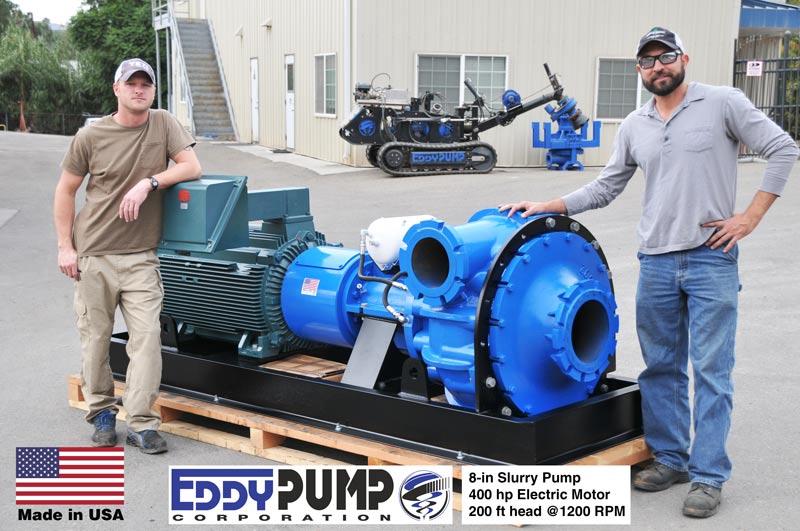
Pass solids from 1-12 inches (rocks, rags, debris). The EDDY Pump’s open rotor design with high tolerances allow anything that will go into the intake to be passed through the discharge without issues.
Tolerance between the rotor and the volute in the 4″ EDDY Pump easily allows the passage of a man’s arm (*see picture below). Compared with the tolerance in a centrifugal pump, the EDDY Pump easily wins. Pump Range spans 1-inch through 12-inch EDDY Pump line, the tolerance ranges from 1-12 inches.
This translates to a significant amount of solids and debris pass through, without clogging the pump. To learn more about the technology behind our pumps continue reading Here.
Process Pumps (Types)
Flooded Suction w/ TEFC Motors
EDDY Pump’s process pump is designed to handle even the toughest industrial applications. Whether you need to transfer viscous fluids, abrasive slurry, or highly corrosive chemicals, we have the perfect pump for the job.
EDDY Pumps are made with durable materials, ensuring a long lifespan and minimal maintenance costs. Our team of experienced engineers will work closely with you to determine the best solution for your specific needs.
In addition to our wide range of standard pumps, we also offer custom solutions for unique and complex applications. Our pumps are designed to meet the highest industry standards, and we take pride in the quality of our products.
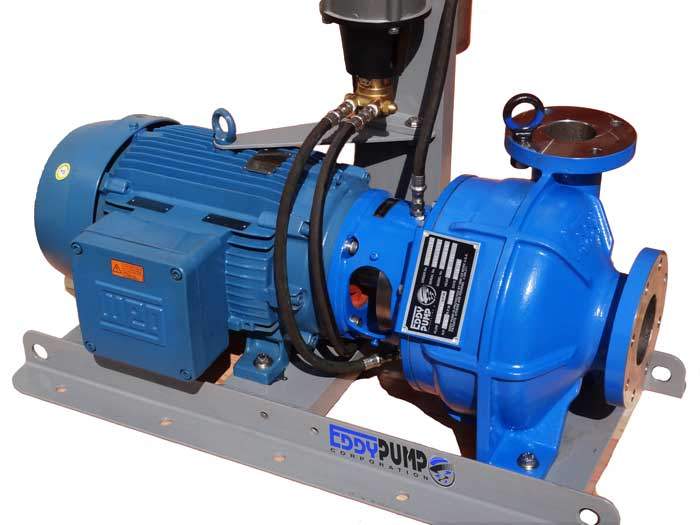
semi-Submersible Slurry Pumps
We have fully submersible and semi-submersible slurry pump options depending on your application.
High Head Pumps (HH)
TEFC Motors and Optional Self-Priming Add-On
Our high-head pumps are specially designed for industrial and commercial applications where high heat and high pressure are required. Whether you need to pump water, chemicals, or other liquids over long distances, our high-head pumps are up to the task.
The unique design of our high-head pumps allows them to generate high head and pressure while still maintaining a high flow rate, making them ideal for a wide range of applications including irrigation, water treatment, and industrial processing.
Our high-head pumps are also highly customizable, with a variety of options available to suit your specific needs. Whether you require a high flow rate, a high head, or a combination of both, our team of experts can work with you to create a pump that meets your requirements.
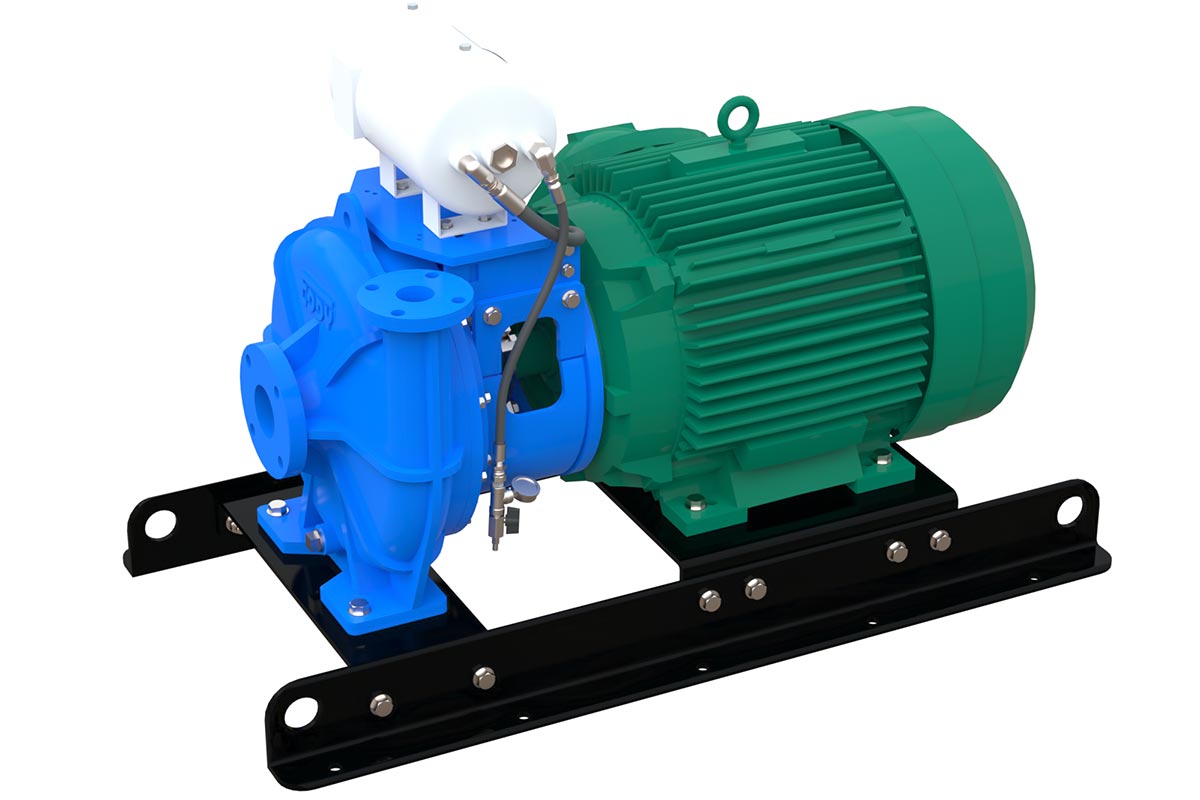
Remote-Operated Trailer Boom Pump
Control Your Boom Operations Remotely – Take Concrete Pumping to the Next Level
The EDDY Pump Remote-Operated Trailer Boom Pump is the ideal land-based pump and dredging technology for removing slurry from tanks, basins, ponds, canals, and lakes.
It takes the convenience and precision of concrete pumping to the next level. It integrates a wireless control system, allowing operators to control the boom operations remotely. This eliminates the need for manual adjustments and enhances safety during concrete pumping tasks.
Why is a Trailer Boom Pump Needed?
Trailer boom pumps are indispensable in various construction projects where concrete must be placed at high elevations or hard-to-reach areas. Whether it’s constructing high-rise buildings, bridges, or tunnels, a trailer boom pump ensures efficient concrete placement, saving time, labor, and costs associated with manual methods.
We are one of the few companies who manufactures both our pumps and dredging equipment to ensure optimal support. All equipment Powered by EDDY Pump.
The Best Non-Clog and High Solids Slurry Pump on the Market. Since 1984.
Best Applications: If you are pumping slurry, high solids, extremely viscous material, paste, high abrasives (sand & gravel) and material filled with solids, then you found the ideal pump for your job. Call Us.
Industries Most Served: Mining, Fly Ash, Coal Ash Pumping, Oil and Fracking, Waste Water, Paper/Pulp, Chemical, Energy, Water Districts, Irrigation Districts and Dredging Companies.
Sales and Selection Help
Let our sales or engineering support help in your pump selection
Call 619-404-1916
Slurry Pump FAQs
What is a slurry pump?
A slurry pump is a standard centrifugal pump specifically designed to manage highly abrasive, high-density slurries containing solid particles. Essential in industries like mining, dredging, construction, and wastewater treatment, these positive displacement pumps and their pump components are designed to handle extreme conditions and demanding tasks, ensuring reliable performance and avoiding clogging.
In mining, these pumps move ore and tailings; in dredging, they assist with abrasive applications like sediment removal and land reclamation projects.
These pumps are vital for mixing and transporting concrete in construction and handling slurries and waste materials in wastewater treatment facilities.
Additionally, slurry pumps are crucial in other industrial processes, such as power generation and chemical processing (where they tend to be called process pumps).
Robust construction and excessive wear-resistant lining of these pumps maximize ease of maintenance and minimize downtime, ensuring superior performance and enhancing operational efficiency and productivity.
What is the purpose of slurry pumps?
A slurry pump transports abrasive, viscous fluids and high-density slurries with solid particles. It is designed for challenging conditions where conventional pumps fail, with process pumping as an example.
Conventional pumps often struggle with abrasive materials and high solids concentrations. As a result, wear parts become common during any particular pump application—failure of mechanical seals is the most common.
Heavy-duty slurry pumps are critical for efficient pumping in demanding mining, dredging, construction, and wastewater treatment applications.
These pumps withstand challenging conditions, maintain productivity, prevent equipment damage, and offer ease of maintenance.
What type of pump is the best solution for sludge -slurry or traditional centrifugal pumps?
The best pump for handling slurry is typically a standard centrifugal pump with robust construction and wear-resistant components. These pumps are designed for pumping slurries and managing the slurry’s abrasive nature and high solids content.
Traditional centrifugal pumps are ideal for transporting fine particles. Specialized centrifugal pumps, such as submersible and heavy-duty horizontal slurry pumps, are erosive-wear and are ideal for slurry pumping for mining, dredging, and wastewater treatment industries.
Their durable design with robust lining materials ensures longevity and efficiency under the demanding conditions of the pumps, no matter the particular application.
Pumping abrasive slurries with a slurry pump: Explained
A heavy-duty slurry pump uses the centrifugal force generated from a rotating impeller to move the sludge mixture through the centrifugal pump and discharge a significant amount of pressure for constant and uniform delivery.
The impeller creates a low-pressure area, creating a suction force, drawing the slurry in, and increasing its velocity and pressure. The high-efficiency impellers and casing of these pumps are designed to handle abrasive particles and feature significant passages to prevent clogging – very necessary for slurry pumping.
Constructed with wear-resistant pump components like the innovative impeller, these centrifugal pumps are durable and practical in transporting high-density, abrasive slurries in various industrial applications.
Which pump is best for handling abrasive slurries?
A slurry pump, engineered with hardened materials and wear-resistant components, is the ideal or right pump for handling abrasive slurries. These positive displacement pumps withstand harsh conditions, ensuring long-term durability and reliable performance. Submersible slurry pumps and heavy-duty horizontal pumps are particularly effective for this purpose.
Submersible slurry pumps operate directly at the source, minimizing cavitation and efficiently handling high solid concentrations. Heavy-duty horizontal pumps, mounted outside the slurry, have reinforced casings and impellers to resist or reduce wear parts. Both types are widely used in mining, dredging, and wastewater treatment industries for transporting abrasive slurries with high solids content.
What other name does a slurry pump go by?
Slurry, sludge, or mud pumps are designed to manage high solids concentrations.
These pumps excel in handling abrasive and dense mixtures, making them essential for various industrial applications with easy maintenance.
What kind of pressure can a slurry pump produce?
The pump’s discharge pressure produced by a heavy-duty slurry pump depends on pump size, impeller design, operating speed, and discharge head requirements.
Pump size and impeller design influence efficiency and suction, while operating speed and discharge high head determine energy and pressure needs.
Slurry pumps can generate pressure from a few psi to several hundred psi and are suitable for various mining, dredging, and water treatment applications depending on the impeller design and high head force. The required pressure rating suits the application’s demands and slurry characteristics.
How do you size a slurry pump?
Sizing a slurry pump involves a detailed and careful process that includes determining the required suction force, discharge rate, head pressure, and the specific operating conditions of the application.
In addition to these primary considerations, several important factors, such as sludge density, viscosity, and particle distribution, significantly influence the selection and sizing of the pump.
These factors must be meticulously evaluated to ensure that the chosen pump operates efficiently and reliably and meets the application’s demands.
Why is pump size an important factor?
Pump size refers to a slurry pump’s physical dimensions and specifications, including the impeller’s diameter, the pump casing’s length, and the motor’s power rating. These measurements are crucial for the pump’s design.
Proper pump sizing ensures optimal performance and greater efficiency for the intended application. Accurately sizing the pumps allows them to handle the specific demands of the slurries, improving longevity and reliability.
How is slurry measured?
The slurry is measured by density, expressed in weight per unit volume like pounds per gallon (lb/gal) or kilograms per cubic meter (kg/m³). The density is influenced by solids concentration, particle size distribution, and liquid phase viscosity.
Solids concentration refers to the amount of highly abrasive slurries in the slurry, while particle size distribution indicates their size range. Liquid phase viscosity affects slurry flow. These factors determine the slurry’s overall density, essential for various industrial applications.
How do you calculate the slurry flow rate?
The sludge flow rate is calculated based on the velocity of the pumping slurry, the discharge pipe’s cross-sectional area, and the pump’s efficiency.
Hydraulic calculations and pump performance curves, provided by the manufacturer, help predict and adjust the flow rate for optimal pump performance.
Can slurry be pumped?
Yes, the slurry can be pumped using specialized pumps designed for handling and pumping abrasive slurries and high-density slurries with solid particles. These pumps are specifically engineered for such challenging conditions.
These pumps are built to withstand the abrasive nature of the sludge and transport it efficiently. Their robust construction and advanced materials ensure reliable performance in various industrial applications.
What type of centrifugal pump is best for slurry?
Centrifugal pumps with robust construction and wear-resistant materials are typically best suited for handling slurry applications. These standard pumps are designed to endure the abrasive conditions often found in slurry transport.
Specifically designed slurry pumps, such as submersible and heavy-duty horizontal pumps, are commonly used for pumping slurries with high concentrations of solids. Their specialized design ensures efficient and reliable operation in demanding industrial environments. Once these conditions are met, a slurry pump can be called the right pump for slurry applications.
How does a slurry system work?
A slurry system typically involves a slurry pump that draws the sludge from a storage tank or pit and pumps it through pipelines to the desired location. The sludge may undergo further processing or treatment before being discharged or reused.
What applications can a slurry pump be used for?
Here are some slurry pumping applications:
- Mining and mineral processing
- Dredging and sand extraction
- Aggregate processing and handling
- Wastewater treatment
- Power generation
- Chemical processing
Their robust design and ability to handle abrasive materials make them indispensable across these industries.
What are the four methods of spreading slurry?
The four methods of spreading slurry are:
- Broadcast spreading
- Injection spreading
- Trailing shoe spreading
- Dribble bar spreading
What are the four gases in slurry?
The gases commonly found in the process of pumping slurries are:
- Oxygen
- Nitrogen
- Carbon dioxide
- Methane
What is slurry made of?
The sludge typically comprises a fluid, usually water or another solvent, combined with solid particles. These particles can include sand, clay, minerals, or organic matter, depending on the specific application.
The composition of the slurry can vary widely and is influenced by the type of content being processed. For instance, in mining, the sludge might contain minerals and ores, while in construction, it could include sand and cement. The precise mixture is tailored to the needs of the particular industrial process.
How is slurry collected?
The slurry is collected using equipment such as slurry pumps, dredges, or vacuum systems that draw it from its source. These sources can include tanks, pits, or designated containment areas.
Once collected, the sludge may be transported for further processing, treatment, or disposal. This ensures that the sludge is handled appropriately according to the specific requirements of the industrial application.
What is the slurry formula?
The formula for slurry varies depending on the specific composition of the mixture. Generally, sludge can be described as a suspension of solid particles in a fluid medium.
The proportions of solids and fluids in the slurry determine its characteristics, including its density, viscosity, and flow properties. This variation allows slurry to be tailored for different industrial and heavy-duty applications.
Why is slurry critical?
Slurry is essential for various industrial processes and applications, including mining, construction, agriculture, wastewater treatment, and environmental remediation. It allows for the efficient transport, handling, and processing of solid mixes that would otherwise be difficult to manage.
Slurry aids in the transportation of ores and minerals in mining. In construction, it is used in concrete and grout applications. Agriculture benefits from sludge in the form of nutrient-rich sludges, while wastewater treatment uses it to manage and treat sewage and sludge. Environmental remediation employs sludge for sediment removal and soil stabilization.
How is slurry measured?
Slurry is typically measured in terms of its density, expressed in weight per unit volume (e.g., pounds per gallon or kilograms per cubic meter). The density of the slurry is influenced by factors such as the concentration of solids, particle size distribution, and the viscosity of the liquid phase.
The concentration of solids refers to the amount of solid material suspended in the slurry. Particle size distribution indicates the range and proportion of different particle sizes. Viscosity, or the thickness of the liquid phase, affects the slurry’s flow properties, contributing to its overall density.
Slurry Pumps – Heavy Duty
For assistance Call 619-404-1916 and let us help match your project with the right pump. Choose from the HHLF Line or the HD Pump Line.
HD (Heavy Duty) Slurry Pumps
HD (Heavy Duty) Slurry Pumps
